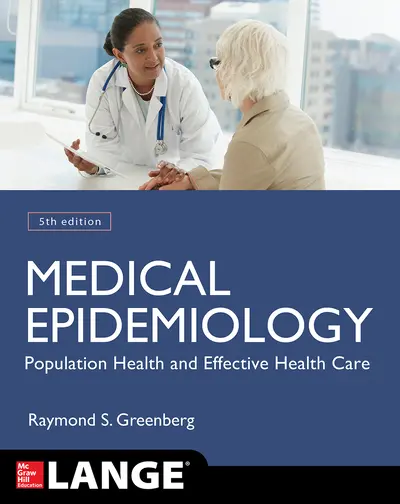My Account Details

ISBN10: 0071822720 | ISBN13: 9780071822725

Step 1 . Download Adobe Digital Editions to your PC or Mac desktop/laptop.
Step 2. Register and authorize your Adobe ID (optional). To access your eBook on multiple devices, first create an Adobe ID at account.adobe.com. Then, open Adobe Digital Editions, go to the Help menu, and select "Authorize Computer" to link your Adobe ID.
Step 3. Open Your eBook. Use Adobe Digital Editions to open the file. If the eBook doesn’t open, contact customer service for assistance.
Understand the role of epidemiology in clinical medicine for the best patient outcomes possible A Doody's Core Title for 2024! For nearly a quarter of a century, Medical Epidemiology has been the go-to text for understanding the principles and concepts of epidemiology and the relationship between population-based science and efficient patient care. It delivers the most current information on patterns of disease occurrence and risk factors – all clearly linked to clinical practice through the use of Health Scenarios in every chapter. This edition of Medical Epidemiology has been completely rewritten to reflect the transformative changes in the manner in which epidemiologic methods are being utilized in today’s healthcare as well as the major shifts that have occurred at the policy level. New chapters have been added on many timely topics, including global health, social determinants of health, health inequalities, comparative effectiveness, quality of care, variations in care, and implementation science. Increased information about evaluating, summarizing, and using evidence for improved patient care and outcomes gives this edition an even greater clinical focus.
Section I: Population Health
Chapter 1: Populations
a. Community
b. Region
c. Country
d. Global
e. Special populations
Chapter 2: Metrics
a. Prevalence
b. Incidence rate
c. Mortality rate
d. Infant mortality
e. Life expectancy
f. Years of potential life lost
g. Disability-adjusted life years
Chapter 3: Patterns of Occurrence
a. Age
b. Race/ethnicity
c. Gender
d. Geographic
e. Temporal
Chapter 4: Global Burden of Disease
a. Study design and goals
b. Mortality patterns
c. Healthy life expectancy
d. Disability-adjusted life years
e. Risk factors
Chapter 5: Social Determinants of Health
a. Definition
b. Whitehall Study
c. Education
d. Income
e. Housing
f. Food security
g. Physical and social environment
Chapter 6: Health Disparities
a. Health Inequities
b. Social determinants
c. Culture
d. Discrimination
e. Access to care
f. Quality of care
Section II. Collecting Evidence for Medical Practice
Chapter 7: Clinical trials
a. Design
b. Subject selection
c. Randomization
d. Blinding
e. Analysis
f. Sample size
g. Limitations
Chapter 8: Cohort studies
a. Design
b. Subject selection
c. Exposure asse
Need support? We're here to help - Get real-world support and resources every step of the way.